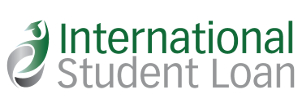For US students who enroll directly in a foreign school, the funding options are far more limited that for those studying in the US. Exchange rates make it even more expensive to study overseas.
The most economical way to fund your education is to borrow what you can on Federal Stafford Loans. You may find that you will need more than what is available in order to cover the costs of your education, and choose also to borrow any remaining necessary funds through private loans.
What Federal Student Aid can I Receive?
At many schools around the globe, you can receive a federal student loan from the William D. Ford Federal Direct Loan Program. If you are an undergraduate, you may receive a Direct Subsidized Loan or Direct Unsubsidized Loan. If you are a dependent, your parents might also be able to borrow on your behalf; they should ask about receiving a Direct PLUS Loan for parents.
Unfortunately, international schools do not participate in the US Department of Education’s grant programs, so you will not be able to obtain a Federal Pell Grant for your degree at an international school.
How Much Can I Receive in Federal Student Loan Funds?
Depending on a variety of factors, the annual limit for Direct Subsidized Loans varies from $5,500 to $20,500. These factors include your year in school and your status as a dependent or independent student. Direct PLUS Loan amounts are determined by subtracting any other financial aid you’re receiving from your total cost of attendance at the school.

How Do I Apply for Federal Aid?
You can apply for student loans at your international school with the same process you use to apply for financial aid in the US.
The first step is to fill out the Free Application for Federal Student Aid (FAFSA) as early as possible. The FAFSA is available on January 1st for school attendance that begins any time from July 1st of that year through June of the following year. There is no special FAFSA for students attending international schools.
Next, make certain that the school you plan to attend has your FAFSA information. International schools can access your FAFSA information electronically. When you fill out the FAFSA, list the school you plan on attending in the question about Federal School Codes. When it’s listed on your FAFSA, your school will then be able to download your data.
You will need to find out your next steps from your chosen school. Different schools have different procedures at this stage of the process. Ask your school how you will get your loan money—what paperwork do you need to fill out, what are the deadlines, etc. Make notes of everything that is required of you; make copies of all paper documents and keep them in a file; make sure you meet all of your deadlines. If your parent plans on taking out a Direct PLUS loan, he or she should keep an eye on required documents and deadlines as well.
If you are a first-year student who is borrowing federal funds for the first time, you will need to complete entrance counseling. What this means is that you will be required to read text, watch an online video, or attend an in-person presentation in order to learn about the responsibilities of taking out a loan. Depending on the school, your entrance counseling can take place before or after you leave the US and arrive at your school.
Foreign Enrolled Private Loans
If you find that federal aid is not enough to help you with the cost of your foreign education, you and your parents might choose to take out a private loan. Foreign enrolled private loans offer:
- Funding limits up to the total cost of education, as determined by your school, excluding any other aid received. The total cost of education includes tuition, room and board, and living expenses.
- Fast online application and approval.
- No application fee and no out-of-pocket costs.
- Hundreds of approved foreign schools, including medical, dental, business, and law schools.


